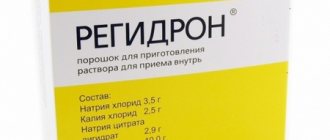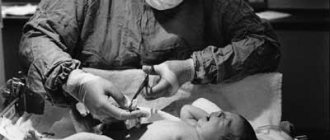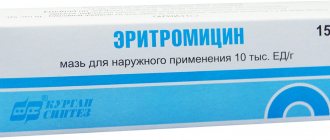Streptococcal infection has for many times remained one of the most numerous and widespread in healthcare. Streptococci affect the oral cavity and respiratory tract, skin and internal organs. They cause sepsis and severe toxicosis.
Streptococci pose a great danger to pregnant women and children. With tonsillitis, streptococcal throat infection can cause an autoimmune response, leading to serious complications of internal organs (rheumatic damage to the heart muscle, joints, kidneys). Streptococcal infection often takes on a protracted, chronic course. Its prevention is of great medical and social importance.
Streptococcal throat infection: sore throats and pharyngitis
Sore throat is an acute infectious disease of the body that occurs with symptoms of acute inflammation of the structures of the pharyngeal lymphoid ring. There are several types of the disease, among which purulent tonsillitis is considered especially dangerous. Anginas are divided into catarrhal, lacunar, follicular, fibrinous, ulcerative-necrotic tonsillitis and phlegmonous. Their symptoms vary from each other. Sore throat is one of the most common diseases after influenza and acute respiratory infections.
Children get sick more often. Most adults become ill before the age of 40. The seasonal nature of the disease is noted. The infection is transmitted by airborne droplets and through household items. The cause of sore throats can be an infection that is localized in the maxillary sinuses, in areas of dental caries, and gums. In chronic tonsillitis, autoinfection often occurs (self-infection from local foci of infection). The state of the human immune system is of primary importance in the development of the disease.
Rice. 1. The photo shows acute catarrhal tonsillitis. “Red throat” - hyperemia of the area of the lateral ridges and larynx. Swelling, pain, redness and enlarged lymph nodes are the main symptoms of streptococcal sore throat.
Rice. 2. The photo shows a purulent sore throat. Streptococcal infection is the main cause of the disease.
Rice. 3. The photo shows chronic tonsillitis. The tonsil on the left is significantly increased in size. Pus and purulent plugs in the lacunae are visible.
Up to 70% of tonsillitis cases are caused by viruses. Among them, the most common are coronavirus and rhinoviruses. The remaining 30% comes from bacteria, fungi and other microorganisms. Up to 80% of cases of sore throats caused by bacteria are caused by group A β-hemolytic streptococci (Streptococcus pyogenes, GABHS).
To timely prescribe an antibiotic for angina, it is necessary to identify antigens to GABHS using the Streptatest system.
Streptotest is a universal tool that allows you to determine the cause of a sore throat in 5 minutes. It will quickly establish the presence of group A β-hemolytic streptococcus in the oral cavity, which means it will help to promptly prescribe adequate antimicrobial therapy. In the absence of a pathogen, streptotest will allow you to avoid unnecessary treatment of sore throat with antibiotics. Streptotest has high (about 90%) specificity and high (about 95%) sensitivity.
Rice. 4. Streptatest has high (about 90%) specificity and high (about 95%) sensitivity. Allows you to determine the cause of a sore throat in 5 minutes.
Streptococcal tonsillitis is complicated by purulent otitis media, sinusitis, peritonsillar abscess, mastoiditis, meningitis, and pneumonia.
Streptococcal infection can cause an autoimmune response, which leads to serious complications of internal organs:
- rheumatic damage to the heart muscle;
- joint damage (arthritis);
- kidney damage (glomerulo- and pyelonephritis).
When microbes enter the bloodstream and massively multiply, sepsis and meningitis can occur.
Treatment of sore throat is carried out with antibiotics of the following groups:
- Penicillin group drugs (Phenoxymethylpenicillin, Augmentin, Amoxiclav, Amoxicillin).
- Macrolides (Sumamed, Azithromycin).
- Cephalosporins (Cefatoxime, Cefuroxime).
Treatment of streptococcal infections
Before prescribing treatment, the doctor conducts a diagnosis. First, he listens to the mother’s complaints, then measures the temperature, examines the child’s skin and throat. Laboratory diagnostics consists of examining blood, urine, and a nasopharyngeal swab to detect the causative agent of infection.
After receiving the test results, antibiotic treatment will be prescribed. Drugs of the penicillin and cephalosporin group are used. If the microorganism is resistant to such antibiotics or is allergic to them, macrolides and lincosamides may be prescribed. For infection in the nasopharynx, local antibiotics can be used in the form of lozenges, sprays and drops.
During treatment, the dosage must be observed. You should not stop taking antibiotics immediately after you feel better. The course of therapy must be completed; it should last 5-10 days.
At temperatures above 38 degrees, antipyretics are prescribed. If it is lower, there is no need to use such medications; the body will cope with it on its own.
Therapy should be started immediately, immediately after the onset of unpleasant symptoms. Otherwise, serious complications may develop - secondary damage to organs and systems. Also, due to decreased immunity, the likelihood of chronic diseases will increase.
Streptococcal infection is the cause of rheumatism
The cause of the development of the disease is beta hemolytic streptococci of group A. They are capable of producing enzymes that have a cardiotoxic effect, and some strains of them are capable of causing an autoimmune response, which leads to the development of systemic inflammation of the connective tissue in the body of a patient with damage:
- membranes of the heart (rheumomyocarditis, rheumatic carditis),
- joints (rheumopolyarthritis),
- small cerebral vessels (rheumorrhea),
- skin (ring-shaped and nodular erythema, rheumatic nodules),
- pleura (rheumopleuritis), liver (rheumatic hepatitis),
- kidneys (rheumatic nephritis).
The disease is most often registered in children 5 - 15 years old.
Rice. 5. Heart damage due to rheumatism. The cause of the disease is streptococcal infection.
Rice. 6. Consequences of rheumatism suffered in childhood.
What is dangerous and how to treat streptococcus in a child’s throat
Mode
A strep throat infection does not require hospitalization. Children with tonsillitis are treated at home. Indications for hospitalization are severe infection and complications.
The latter include.
Features of streptococci
The development of a bacterial infection in children may be indicated by: purulent nasal discharge, lack of appetite, sore throat, high fever, swelling and tenderness of the lymph nodes, white coating on the walls of the throat and tonsils. Beta-hemolytic streptococcus is one of the most dangerous pathogens. Pathogenic microorganisms provoke inflammation, which is accompanied by the accumulation of pus in the lesions.
The infection can spread to the paranasal sinuses - sphenoiditis, sinusitis, heart - endocarditis, pericarditis, brain - abscess, meningitis or ears - otitis media, eustachitis.
Viridans streptococcus is an opportunistic microorganism that does not cause disease if the immune system is functioning normally. However, hypothermia and a lack of vitamins and minerals can cause a weakening of the child’s body’s defenses. Subsequent active proliferation of gram-positive bacteria leads to poisoning of the body and the development of severe complications such as endocarditis or pericarditis.
Streptococcus is transmitted by airborne droplets and household contact through toys, towels, dishes and other household items.
It is immediately worth noting that it is impossible to identify the causative agent of infection by clinical manifestations.
What does Komarovsky think about the infection?
In his program, the famous pediatrician E.O. Komarovsky explains that in approximately 30% of cases, pain in a child’s throat occurs due to streptococci. In other cases, viruses become the culprits. The approach to the treatment of viral and bacterial diseases is completely different: streptococcus is a bacterium that can only be eliminated with antibiotics. Penicillin drugs showed the greatest effectiveness.
However, before using antibacterial therapy, it is necessary to make sure that streptococcus is the cause of the disease. To do this, it is mandatory to take a throat swab.
The doctor says: the sooner you start therapy, the greater the likelihood of avoiding complications after the disease and developing your own immunity against streptococci.
In addition, the pediatrician believes that for streptococcal infections, alternative medicine is completely useless, and only medications can cope with it.
exclude interaction with infected patients;
If your throat hurts, does it mean streptococcus?
And yet, most often, doctors and parents remember the activity of streptococci precisely in connection with the development of a particular disease. In most cases, as soon as the child has a sore throat. However, contrary to popular opinion, especially widespread among parents, not all inflammations in the child’s nasopharynx are the result of the activity of streptococci.
Only about 30% of all acute diseases in the nasopharynx are caused by the activity of streptococcus. The remaining 70% is due to the activity of various viruses that cause acute respiratory infections (ARVI). In this regard, parents should understand that the medications used in one case and the other are radically different - drugs that effectively kill bacteria are completely powerless against viruses, and vice versa.
Thus, the first task that parents of children face when their child feels unwell (especially with regard to problems arising in the respiratory tract) is to clearly determine: does the child have a virus or a streptococcal infection?
Parents can be helped with this in any modern medical institution, which uses the so-called rapid test for direct detection of streptococcal antigen in a child: the doctor literally applies a special strip of paper to the tonsil (sometimes just to the back wall of the throat) of the child for literally seconds and according to the changed (or not) the color of the test gives a clear picture of the presence (or absence) of streptococci in the baby’s throat.
In modern pharmacies you can often purchase special tools for express diagnostics at home - the so-called streptotests. It is enough to literally slobber on simple strips to see whether the child has streptococcus in his throat or not.
Treatment of streptococcal infection in a child.
Ambrobene
Inhalation with diluted Ambrobene solution:
- facilitates and activates the removal of sputum with pathogenic flora;
- reduces the severity of inflammation, redness, and sore throat;
- helps localize the infection.
For inhalation: Ambrobene is mixed with sodium chloride in a 1:1 ratio. Dosage, frequency of procedures: up to 2 years - 1 ml of solution containing ambroxol 7.5 mg / 1-2 times / day, from 2 to 7 years - 2 ml / 2 times / day, over 7 years – 2-3 ml/2 rubles/day. The duration of the inhalation course is 4-5 days.
Ambrobene is not used for steam inhalation. The price of a 40 ml bottle is 140-300 rubles.
helps localize the infection.
Diagnostics and norms for the number of bacteria in a throat smear
To select a treatment regimen, a small patient must undergo a series of diagnostic procedures to identify the specific type of causative agent of the infectious process. It is worth considering that the rate of streptococcus in a throat smear is an individual and relative indicator, so the doctor takes into account the ability of antibodies to resist pathogenic bacteria. The objectives of laboratory research are:
Streptococci - the cause of erysipelas
Erysipelas (translated from French as red) is an infectious skin disease caused by group A beta hemolytic streptococcus (GABHS). With erysipelas, a limited area of the skin and tissue is affected.
Streptococcal infection penetrates through wounds and abrasions, diaper rash and cracks, psoriatic, herpetic and other skin lesions. The pathogen multiplies in the lymphatic skin capillaries. Toxins of the pathogen cause serous, often serous-purulent inflammation, which is complicated by the destruction (necrosis) of soft tissues. Autoimmune complexes contribute to the development of hemorrhagic syndrome, as evidenced by the appearance of erythema (redness), swelling and blisters with serous-hemorrhagic contents.
With erysipelas, the lower extremities are more often affected, and less often the upper extremities. The skin of the face is even less commonly affected.
The disease develops quickly, rapidly, with pronounced symptoms of intoxication. Pain, redness and swelling are the main symptoms of erysipelas.
In case of classic erysipelas, microbiological examination is not carried out. Antibiotics of the penicillin group are the drugs of choice in the treatment of the disease.
Rice. 7. The photo shows erysipelas in a child.
Rice. 8. The photo shows a mug. The cause is streptococcal infection. A hyperemic, raised lesion is visible on the skin of the face. Its surface is shiny and tense.
Rice. 9. The photo shows a mug. Phlegmonous-necrotic form of the disease.
Rice. 10. The photo shows erysipelas (phlegmonous-necrotic form). Streptococci are the culprits of the disease.
Rice. 11. The photo shows erysipelas (gangrenous form of the disease). The culprit of the disease is streptococcus.
Biology and medicine
In newborns, group B streptococci cause two types of infections - early and late.
Early ones begin in the first week of life, half of them in the first 20 hours of life. Many children show signs of infection at birth. Infection with streptococci that live in the mother's genital tract occurs during or shortly before childbirth.
According to mass surveys, 5-40% of women are carriers of group B streptococci in the vagina or rectum. About half of the children born to such women through the vaginal birth canal are contaminated with streptococci, but only 1-2% of them develop an infection.
Among the sick, premature babies and those born during protracted or complicated labor predominate.
The clinical picture of early streptococcal infection is the same as in other forms of neonatal sepsis. Characteristic are respiratory failure, drowsiness, and arterial hypotension. Almost all patients have bacteremia, 33-50% have pneumonia, hyaline membrane disease, or both, and 33% have meningitis.
Late infections begin between the ages of 1 week and 3 months (on average at the 4-5th week of life). Infection occurs during childbirth or later - from the mother, medical personnel or from other sources. The most common form of late streptococcal infection is meningitis. In most cases it is caused by serotype III strains.
Symptoms are fever, drowsiness or excitability, sluggish sucking, epileptic seizures. Arterial hypotension, coma, status epilepticus, neutropenia are unfavorable prognostic signs.
Half of the survivors are left with neurological defects (ranging from mild speech delay and hearing loss to severe mental retardation, blindness and epilepsy).
In addition, late streptococcal infection can occur in the form of osteomyelitis, purulent arthritis, phlegmon of the maxillofacial region in combination with lymphadenitis of the submandibular or preauricular lymph nodes, sepsis without an obvious focus of infection.
The drug of choice for all infections caused by group B streptococci is benzylpenicillin. If sepsis is suspected, newborns are prescribed ampicillin with gentamicin until culture results are obtained.
If Streptococcusagalactiae is isolated, many pediatricians continue to administer gentamicin along with ampicillin or benzylpenicillin until the condition improves.
This approach is based on data on the synergistic bactericidal effect of gentamicin and benzylpenicillin (as well as gentamicin and ampicillin) on streptococci in vitro.
The combination of these drugs is also recommended for meningitis, at least in the first days, although its effectiveness has not been proven in clinical trials.
The duration of monotherapy with benzylpenicillin for sepsis and local infections is 10 days, for meningitis - at least 14 days. A shorter course of treatment is fraught with relapses.
Infections caused by group B streptococci are especially common among high-risk newborns (premature, protracted or febrile labor, rupture of amniotic fluid more than a day before birth, chorioamnionitis).
Since the source of infection, as a rule, is the birth canal, it is necessary to identify carriers among pregnant women at risk and provide them with medication or immunoprophylaxis.
When ampicillin or benzylpenicillin is administered to women in labor, the risk of disease in newborns is significantly reduced.
However, it is quite difficult to identify carriers in advance, since culture of vaginal smears in the early stages of pregnancy does not allow predicting the composition of the microflora of the genital tract at the time of birth.
The US Centers for Disease Control recommends that all pregnant women at 35-37 weeks undergo a culture of smears from the vagina and anus.
During childbirth, antibiotic prophylaxis is offered to all carriers and is strongly recommended in the presence of the risk factors listed above, multiple pregnancies and all women whose children from previous births suffered a streptococcal infection during the neonatal period. Benzylpenicillin is administered intramuscularly or intravenously at a dose of 5 million units, and then 2.5 million units every 4 hours until the end of labor. If you are allergic to penicillin, it is replaced with clindamycin or erythromycin.
The appropriateness of antibiotic prophylaxis in the absence of risk factors is controversial. Approximately a quarter of newborns who develop streptococcal infection do not belong to the risk group, but the incidence rate in the risk group is still significantly higher.
Providing antibiotic prophylaxis during childbirth to all carriers means that 15-25% of women in labor and newborns will be exposed to antibiotics and, therefore, at risk of allergic reactions and the emergence of resistant strains.
A more rational method of prevention seems to be immunization with a vaccine against group B streptococci, which is currently being developed.
Because antibodies cross the placenta and provide passive immunity to the newborn, it is planned in the future to vaccinate all women of childbearing age before or during pregnancy.
Streptococcal impetigo
Streptococcal impetigo is the most common manifestation of streptoderma. Streptococcal impetigo is characterized by the appearance of phlyctenas - pustules (vesicles with purulent contents) in the superficial or deep layers of the skin, not associated with the hair follicle. Pustules located in the deep layers of the skin leave scars after healing. Superficial - heal without leaving a trace.
The disease has many varieties
- Bullous impetigo is most often recorded on the legs, hands and feet. The conflicts are larger in size. After opening them, you can see the remains of the walls of the bubble along the edges.
- Streptococcal diaper rash is recorded in the folds of the skin - inguinal, axillary, behind the ear and intergluteal.
- Streptococcal infection (cheilitis) - in the corners of the mouth.
- Streptococcal ecthyma (pustules are located in the deep layers of the skin) - most often localized on the skin of the buttocks.
- Tourniole - around the nail plates.
Treatment
A doctor can best advise how to treat streptoderma in children. He will examine what the child looks like and make a preliminary conclusion about the disease. He will prescribe general clinical tests, prescribe ointments and antiseptics for treating affected skin areas at home.
It is advisable to accurately determine the virus using tests, after which the doctor will prescribe effective antibiotics. Think about what medications your child has recently been given, and tell the doctor to prescribe a different medication that the virus is not immune to.
Streptococcus, which causes streptoderma, lives in large numbers in the environment. The barrier to its penetration into the body is human immunity. In the fight against the disease, it is important to minimize the child’s contact with the causative agent of the disease, which can be achieved through hygienic measures. The success of the treatment depends on how much effort you put in.
- Boil the underwear of newborns and older children, or machine wash at 90 degrees (after which the virus immediately dies), iron with a hot iron.
- Disinfect your child's toys and dishes every day with boiling water or approved household chemicals.
- The patient must have a separate set of linen and a towel; they must be changed daily, just like home clothes.
- Treat soft toys with a lamp or wash them and hide them during illness.
- Do daily wet cleaning and ventilate the nursery.
- Do not swim while sick, because the virus will spread even more.
- Make sure that the patient does not scratch the affected areas on the face and other parts of the body (the doctor should prescribe antihistamines to reduce itching).
In addition to maintaining hygiene at home, treatment is necessary: healing ointment, daily treatment of affected areas with an antiseptic, and taking antibiotics. The doctor will determine how long to take medications to cure the disease.
Local treatment begins with treating the abscesses by opening them sterilely. Then an antiseptic and a special ointment are applied to the sore spot. At home, the following antiseptic drugs are used: brilliant green, salicylic alcohol, boric acid or hydrogen peroxide.
The affected areas, including the head, are treated at least twice a day using a cotton swab. When the antiseptic has dried, you can apply an ointment containing an antibiotic (Synthomycin liniment, Tetracycline ointment, etc.) to the skin.
In rare cases, your doctor may prescribe an ointment with a hormone and an antibiotic to better relieve inflammation. There is nothing wrong with such treatment, but it is not advisable to prescribe the ointment to a child on your own.
For systemic treatment of streptoderma in children at home, not only ointment is used, but also penicillin antibiotics, macrolides and cephalosporins. It all depends on personal sensitivity to drugs, checked by microbiological analysis, the presence of allergies, and previous antibiotic treatment.
Streptococci are the cause of inflammation of the follicles (hair follicles)
Furuncle
Streptococci and staphylococci cause acute purulent-necrotic inflammation of the follicle (hair follicle), sebaceous gland and surrounding tissue, which is called a boil. All kinds of skin injuries, increased sweating, vitamin deficiencies and decreased immunity contribute to the disease.
A boil occurs in the area of skin where hair grows - the back of the head, back, buttocks, groin and armpits. By the end of the first week, the inflammatory infiltrate takes on a cone-shaped shape. At its top there is a yellowish-greenish head. After the purulent masses break through, the defect is closed with a scar. The boil can be complicated by an abscess, phlegmon, sepsis and purulent meningitis. The development of multiple boils is called furunculosis, which most often develops in people with weakened immune systems.
Rice. 23. The photo shows a boil of the nose. The cause of the disease is streptococcal infection.
Rice. 24. The photo shows a boil of the thigh.
Rice. 25. The photo shows a boil. The culprit of the disease is streptococcus.
Carbuncle
Inflammation of several adjacent follicles is called a carbuncle. Carbuncle can be complicated by purulent lymphadenitis, purulent thrombophlebitis, erysipelas, phlegmon and sepsis. Carbuncle of the nose and lip is dangerous for the development of purulent meningitis.
Rice. 26. The photo shows a carbuncle of the skin of the back.
Rice. 27. The photo shows a carbuncle of the neck. The cause is streptococci.
Phlegmon - purulent inflammation of the tissue
With purulent inflammation of the fiber, a large amount of which is located under the skin, in the intermuscular and retroperitoneal space or the walls of hollow organs (appendix, stomach, gall bladder, intestines, etc.), phlegmon develops.
With purulent inflammation of the periungual tissue, paronychia develops, and felon develops in the subcutaneous tissue of the fingers. Panaritium can be complicated by tendovaginitis, osteomyelitis, phlegmon of the hand, lymphadenitis and sepsis.
When the infection spreads to the tissue of the neck from almonds affected by pyogenic bacteria or inflammatory foci of the maxillofacial system, phlegmon of the neck develops. With phlegmon of the neck, streptococcal infection can spread to the pericardium, pleura and mediastinal tissue. When bacteria enter the blood, sepsis develops.
With the development of acute purulent inflammation in the mediastinal tissue, mediastinitis develops, in the perinephric tissue - paranephritis, in the peri-uterine tissue - parametritis, in the tissue around the rectum - paraproctitis. Intoxication, fistulas, peritonitis and sepsis are the most dangerous complications of phlegmon.
Rice. 28. The photo shows a combination of phlegmonous and fibrous tonsillitis. The transition of the inflammatory process from lymphoid tissue to peri-almond tissue is visible.
Rice. 29. The photo shows paronychia. The disease is often caused by streptococci.
Rice. 30. In the photo there is a panaritium.
Abscess - a complication of streptococcal sore throat
An abscess is formed when acute purulent inflammation develops, followed by melting of the tissue and the formation of a cavity filled with pus. Abscesses can occur in a variety of tissues and organs, but the medically significant abscesses are those that appear in the brain, lungs, and liver. Their sources are purulent otitis, sinusitis, pneumonia, boils and carbuncles of the face.
Rice. 31. Peritonsillar abscess is one of the early purulent complications of tonsillitis. In the figure we see a spherical formation that displaces the palatine arches and the soft palate in the opposite direction.
Rice. 32. The photo shows flux (tooth abscess). A common cause is streptococci.
Rice. 33. The photo shows an abscess of the upper eyelid.
Rice. 34. The photo shows an abscess in the lungs. The horizontal level of liquid in the cavity is visible.
Streptococcal infection in infants
Infection of a newborn occurs during childbirth, when the fetus passes through the infected paths of the mother and during pregnancy (in utero). The source of infection is group B streptococci (S. agalactiae). The infection may appear immediately or several weeks after birth. In newborns, the disease often occurs in the form of bacteremia, pneumonia, meningitis and sepsis.
Streptoderma in infants
With streptoderma, the surface layer of the skin is affected. Vesicles (bubbles) containing clear liquid appear on the skin, which quickly becomes purulent. After a few days the bubbles burst. The affected area of skin becomes crusty. Due to the itching that accompanies the disease, the child behaves restlessly and sleeps poorly. Scars form at the sites of damage.
Rice. 35. The photo shows streptoderma in an infant.
Rice. 36. The photo shows streptococcal diaper rash.
Vulgar ecthyma in infants
With vulgar ecthyma, the deeper layers of the skin are affected. Vesicles (bubbles) containing clear liquid appear on the skin, which quickly becomes purulent. After a few days the bubbles burst. The affected area of the skin becomes covered with a yellow crust, under which there is a painful ulcer. The disease occurs with elevated temperature. The child becomes lethargic and drowsy. In a complicated course, inflammation of the lymphatic vessels and lymph nodes develops.
Sepsis in infants
In sepsis, streptococci circulate in the blood and affect numerous organs of the child with the development of purulent inflammation. The disease is difficult. In 5–20% of cases, the disease in children ends in death.
Rice. 37. The photo shows sepsis in an infant.
Meningitis in infants
Purulent inflammation of the meninges in children is severe. Body temperature rises significantly. The child is lethargic or agitated. A severe headache appears. Toxic damage to small vessels is manifested by a rash on the body. There is rapid weight loss. Toxic shock may develop. The mortality rate is 10-15%. Subsequently, mental retardation may occur.
Rice. 38. The photo shows a rash due to meningitis.
Pneumonia in infants
Streptococcal pneumonia in children is severe. Due to inflammation of the lung tissue, gas exchange is disrupted and the child’s body begins to suffer from oxygen deficiency. Complications: toxic shock.
Infection in newborns. Group B streptococcus
In newborns and infants, streptococcal infection is distinguished in the first week of life (early) and infection after the first week to 3 months (late).
The number of early streptococcal complications has now significantly decreased and is almost equal to the frequency of late B-streptococcal infection in newborns. This is due to the effective prevention of morbidity with antibiotics before and during childbirth.
What diseases are possible?
During the first week of a child's life, the most serious complication may be a generalized infection - sepsis.
It can occur against the background of B-strepococcus caused by pneumonia and meningitis, and milder lesions - pyoderma, folliculitis, abscesses.
In the later period, streptococcal meningitis and pneumonia are also possible, and sepsis develops less frequently. Meningitis is more common in the late period of diseases caused by group B streptococcus.
Long-term consequences are possible for early and late-onset streptococcal diseases, especially for infants with meningitis. Hearing impairment and deviations in mental and physical development are possible. Currently, in developed countries, death from infection caused by B-streptococci occurs in 4-6% of all patients.
In pregnant women, group B streptococcus can cause miscarriage, stillbirth and premature birth. In nursing mothers, B-hemolytic streptococcus from a baby can cause lactostasis and mastitis.
Symptoms of streptococcal infection
Most of the symptoms are characteristic of any infectious process. With early onset, symptoms of streptococcal infection appear immediately after birth. When onset after the first week of life, the baby is born healthy, but symptoms develop later.
Some symptoms: fever, feeding problems, irritability or drowsiness, lethargy, lethargy, difficulty breathing, pale, bluish skin color, pinpoint rash.
Diagnosis of group B-streptococcus diseases in newborns
Group B hemolytic streptococcus is diagnosed by drawing blood or cerebrospinal fluid for sterility. The resulting material is inoculated onto nutrient media and after a few days, colonies of bacteria grow, if they are present in the baby’s body.
In cases where streptococcus was detected in pregnant women and they received antibacterial therapy, the child after birth requires dynamic monitoring, even if it looks healthy.
In both cases, both with early onset of the disease and with late onset, if there is a suspicion of streptococcal infection, it should be confirmed by diagnostic tests and the sensitivity of bacteria to antibiotics should be determined. In milder forms of the disease - local abscesses - the culture is taken directly from the element.
Treatment of newborns
Streptococcal infections in newborns and older children are treated with antibiotics (such as penicillin or ampicillin) given through a vein. In severe cases, a complex of measures of intensive symptomatic therapy is carried out.
Transmission of infection
When the disease begins early, streptococcal bacteria are transmitted from mother to child, most often during childbirth. Antibiotics given to the mother during childbirth reduce the risk of this transmission.
When the disease begins after a week of life, the bacteria could also be obtained from the mother or from another source. If the child's mother is not a carrier of streptococcus, it is not always possible to determine the source of infection.
For a child whose mother does not test positive for group B streptococcus, the source of infection for late-onset disease may be difficult to understand and often unknown. Breastfeeding is considered safe for the baby if the mother has group B streptococcus.
On the contrary, feeding with mother's milk has only a beneficial effect on the baby.
Risk factors
Factors that increase the risk include: A positive test result for group B streptococcus at the end of the current pregnancy (35-37 weeks of pregnancy), detection of streptococcus in the pregnant woman's urine during the current pregnancy, prematurity (before 37 weeks of pregnancy), signs of illness in the mother (fever and etc.), a long period between the rupture of membranes and childbirth, previous births with the development of early streptococcal complications.
Risks of late onset of infectious streptococcal complications: prematurity, developmental delay due to other reasons (for example, CMV), lack of breastfeeding, poor child care conditions.
RESULTS……”,”word_count”:554,”direction”:”ltr”,”total_pages”:1,”rendered_pages”:1}
Source: https://pro-medica.ru/mother-i-infant/infektsiya-u-novorozhdennykh-streptokokk-gruppy-b











